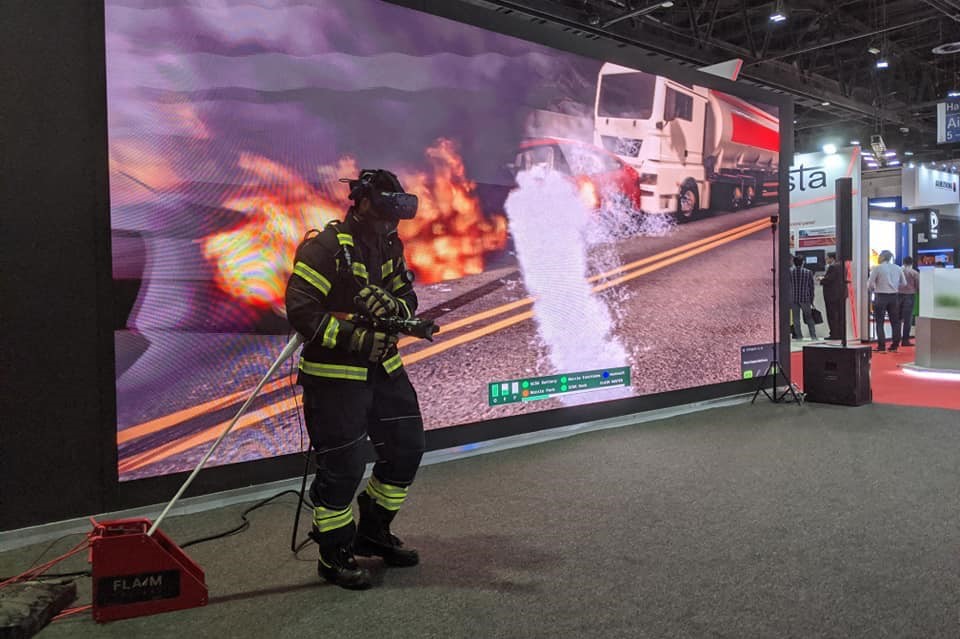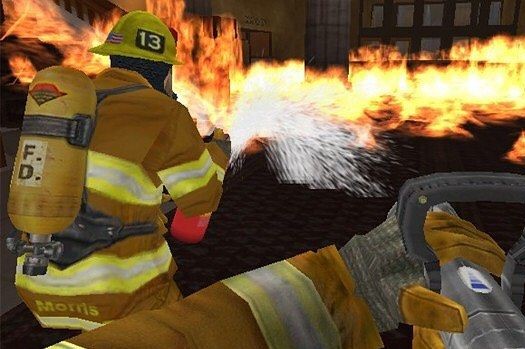
VR immersive simulation in firefighter training: a study from Norway
Firefighters: Virtual Reality (VR) technology in training has gained interest in many areas, including firefighter training
Immersive VR simulation in firefighter training: Western Norway University study
Virtual Reality (VR) technology for training has gained interest in many domains, including firefighter education.
However, there is hesitation to accept immersive VR technology, especially for skills training.
This study investigates the experiences of nineteen firefighter-students, eight instructors, and seven experienced firefighters, all first-time users of an immersive VR tool, used for simulated fire extinguishing.
The technology provided simulated fire and smoke, heat elements in the suit, and pressure experience via a haptic feedback hose.
User experiences were studied through questionnaires, and observations.
SPECIAL VEHICLES FOR FIREFIGHTERS: VISIT THE PROSPEED BOOTH AT EMERGENCY EXPO
Firefighters: the experience of immersive VR extinguishing was compared to previous Hot-Fire Live-Simulation (HF-LS), usually performed in a container in the training field
 The results indicate that experienced firefighters valued the training more highly than students.
The results indicate that experienced firefighters valued the training more highly than students.
Findings illustrate a difference between user groups regarding expectations of realism in simulated representations.
For example, the visual realism of the smoke and the fire was more satisfactory for experienced firefighters than students and instructors.
Immersive VR for training has gained interest for use in different domains, such as medicine, industry, and military, where skills training is necessary, costly, and sometimes impossible to conduct by other methods (Checa & Bustillo, 2020; Heldal, 2004).
In the Fire and Rescue Service (FRS) domain, Virtual Simulation and VR have shown their potential as risk-free and cost-effective training formats, complementing live training.
However, the technology barrier and the hesitancy regarding the new ways of training remain high (Heldal, Fomin, & Wijkmark, 2018).
Critics question whether systems` inability to provide photorealistic scenarios with naturally interactive and dynamically correct fire and smoke representation may induce faulty learning outcomes (Engelbrecht et al., 2019a; Heldal & Hammar, 2017; Tate et al., 1997).
To become a competent firefighter, practice-based skills training is necessary. It is evident that it is impossible to learn how to connect hoses, use a nozzle, perceive risk-signs, and extinguish fires efficiently just by reading books, listening to instructors, or watching videos.
One needs to be in a convincing and realistic situation, learn how to act, use equipment and methods, and repeat necessary activities several times, to be prepared for real fire incidents.
The usual practice-based training is HF-LS, a training often performed in containers at the training field of fire academies or FRSs, using real fire, smoke, equipment, vehicles, and people.
Practical skills training, and particularly HF-LStraining, should be practiced many times, a known issue in training emergency professionals.
Setting up HF-LS training is resource-demanding and, though real-life simulation fidelity is essential, safety and environmental regulations partly limit the challenge students face during training, compared to possible real-life incidents.
Additionally, buildings in a fire training field are constructed to withstand several fires per day and therefore have uncharacteristic looks.
The cars used have also suffered numerous fires already. However, they are physical, tangible objects and in this way considered realistic.
The motivation for this study is to examine how new immersive technology, embracing most of the new capabilities virtual reality offers, can support training practical skills.
If VR technology can complement HF-LS training, it may provide more training sessions for the students, as well as an alternative for further (and more frequent) training after the firefighter qualification has been acquired (Hartin, 2009), and provide more convincing and realistic situations.
VR and Firefighters, the main research question is: To what extent are virtual immersive technologies accepted, for complementing firefighter skills training?
We chose to decompose the main research question and seek to answer the following four sub-questions:
- RQ1 Do the participants (firefighter students, instructors, and experienced firefighters) experience presence in VR in relation to HF-LS training?
- RQ2 What are the participants’ opinions on the current VR training?
- RQ3 How do firefighters’ earlier experiences influence their attitudes to immersive VR training?
- RQ4 What are the main challenges of VR, and HF-LS, for better training from the user’s perspective?
The answers to these questions are essential for user organizations interested in the potential of immersive VR for skills training.
The pedagogical use of the tool, including competence to develop actual and possible training objectives in these technologies, is often a major concern for user organizations.
The results may also inform researchers investigating current problems regarding the implementation and usage of VR training.
Developers would gain from the results by better understanding specific needs and the situations that require further development via possible tools supporting firefighter skills training.
The data behind this paper come from a field study.
SETTING UP SPECIAL VEHICLES FOR FIREFIGHTERS: DISCOVER THE PROSPEED STAND AT EMERGENCY EXPO
The Swedish Civil Contingencies Agency (MSB1 ), responsible for the two-year firefighter study program in Sweden, has been utilizing Virtual Simulation in incident commander training, but not for skills training.
In March 2019, MSB initiated a test of an immersive VR training system, with the objective of exploring the possibilities of this technology for firefighter skills training.
This paper reports the results from the field study examining the experiences of firefighters with different backgrounds; nineteen firefighter students, eight instructors, and seven experienced firefighters from different FRSs in the area.
The focus was on examining the realism of experiences, objects, and situations in the VR environments compared to familiar training methods (HF-LS).
To our knowledge, this is the first study of its kind investigating user experiences of immersive VR employed for skills training in the field.
While this paper examines the use of a commercially available product, the intention is not to market the product or compare it with other products.
It has been chosen for its currently unique ability, to our present knowledge, to stimulate different senses for immersion (visual, audio, haptic, and heat) and to fulfill our intention to learn more about how immersion influences skills training in the domain of the fire service.
Study on Virtual Reality VR in firefighter training: read the full version
https://idl.iscram.org/files/ceciliahammarwijkmark/2021/2383_CeciliaHammarWijkmark_etal2021.pdf
Read Also:
UK Fire Brigade Raises Alarm Over UN Climate Report
US EMS Rescuers To Be Assisted By Paediatricians Through Virtual Reality (VR)


